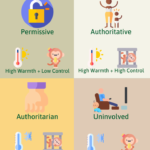Struggling to maintain harmony between your professional commitments and family responsibilities? You’re not alone. Achieving equilibrium between work and family can often feel like performing a high-wire balancing act. This article provides comprehensive insights and strategic approaches to help you navigate this complex challenge. By implementing these strategies, you can effectively balance your work and family responsibilities, ultimately leading to increased productivity in the workplace and a happier, more fulfilled personal life. So, let’s dive into this crucial topic and find the perfect balancing act for your work and family life!
“Understanding the Importance of Work-Life Balance: Defining Equilibrium”

Understanding the importance of work-life balance and defining equilibrium is crucial for maintaining a healthy lifestyle. A balanced work-life equilibrium means effectively managing your time between professional responsibilities and personal life, including family commitments and self-care. It’s about finding the “sweet spot” where both domains are satisfied and fulfilled, contributing to improved mental health and overall well-being. This balance can enhance productivity at work, foster better family relationships, and reduce stress levels. Prioritizing work-life balance is not just a personal benefit, but it can also lead to stronger job performance and increased employee satisfaction.
“Practical Strategies for Balancing Work and Family Responsibilities”
In the blog post “Balancing Act: Achieving Equilibrium Between Work and Family Responsibilities,” we delve deeper into practical strategies that aid in managing work and family tasks. Key strategies include setting healthy boundaries between work and home, mastering time management skills, and prioritizing self-care. Moreover, open communication with employers and family members can help create a flexible and understanding environment. Leveraging technology for efficient task management is another crucial strategy. By adopting these practical measures, you can strike a balance between your professional commitments and family responsibilities, thereby improving your overall quality of life.
“Workplace Flexibility: A Key to Achieving Work-Life Balance”

Workplace flexibility is indeed a crucial factor in achieving a harmonious work-life balance. This refers not only to flexible working hours but also to the option to work from home or any other location. By having more control over their schedules, employees can more effectively manage their professional responsibilities while also devoting ample time to their family needs. This also reduces stress and increases job satisfaction, leading to better productivity. Companies that offer such flexibility can attract top talent and improve employee retention. Therefore, promoting workplace flexibility is a win-win for both employers and employees.
“The Role of Time Management in Balancing Work and Family Life”
The role of effective time management is integral in achieving a balance between work and family life. It requires strategic planning and prioritizing of tasks. Efficient time management strategies, such as setting realistic goals, creating a structured schedule, and delegating tasks can significantly reduce stress and increase productivity at work. Meanwhile, it liberates quality time to be spent with family, enhancing interpersonal relationships. Remember, the objective is not to fill every minute with tasks, but to maximize productivity within work hours, and allow for rejuvenating family time, thus achieving a harmonious work-life equilibrium.
“Overcoming Challenges: Maintaining a Healthy Balance between Career and Family”

Maintaining a healthy equilibrium between work and family responsibilities can seem like a colossal task at times. Overcoming these challenges require strategic planning and efficient time management. Ensuring regular, quality time for loved ones is crucial, as is setting clear boundaries to prevent work from intruding into personal space. It’s also essential to take care of your personal health and wellbeing. Employ techniques such as mindfulness, exercise, and proper nutrition to manage stress effectively. Remember, achieving a work-life balance is not a one-time task, but an ongoing process that necessitates continuous adjustment and reassessment.




